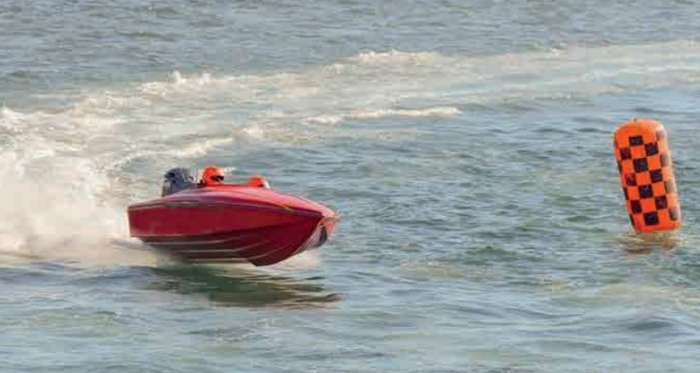On its latest Safety Digest, UK MAIB describes a racing powerboat, when two friends decided to the test their boat at a public slipway. During the trials, the driver turned the boat around a navigation buoy when it instantaneously flipped over. As a result, both men were thrown into the sea, injured and disoriented.
The incident
Two friends, a driver and navigator, launched their racing powerboat at a public slipway. They were planning to test the boat by sprinting around some nearby navigation buoys. After a few trials, the driver turned the boat at high speed around one of the navigation buoys when it instantaneously flipped over, throwing both men into the sea. The boat landed upright with the engine stopped; both crew were in the water about 5 metres away, injured and disoriented.
[smlsubform prepend=”GET THE SAFETY4SEA IN YOUR INBOX!” showname=false emailtxt=”” emailholder=”Enter your email address” showsubmit=true submittxt=”Submit” jsthanks=false thankyou=”Thank you for subscribing to our mailing list”]
A nearby yacht witnessed the incident and made a “Mayday” call on VHF radio. A friend of the men went to the scene, while the yacht crew managed to recover the driver out of the water, and the friend the navigator.
The navigator was seriously injured and his friend drove him to the local RNLI station. By this time, the RNLI lifeboat had been launched and ambulance paramedics had arrived at the RNLI station. The driver of the racing boat was transferred to the lifeboat from the yacht and also taken to the RNLI station for first-aid treatment.
The driver suffered three broken ribs and was discharged from hospital later that day. The navigator had suffered a very deep laceration to his ankle and his foot was later amputated.
- Kill cords save lives. The driver of the racing boat was wearing his kill cord, which resulted in the engine cutting out when he was thrown out. This prevented further injury or accident as the boat was stopped when it landed back on the sea. Nevertheless, in the rapid capsize with both occupants being hurled out, and despite the kill cord cutting out the engine, it was very unfortunate that the rotating propeller struck the navigator’s ankle in mid-air.
- Alcohol and powerboating are bad travelling companions. Even a small amount of alcohol can have an effect on co-ordination and impair judgment. In a racing speedboat, travelling at up to 60kts, decisions are taken in split seconds. There was insufficient evidence in this case to determine whether or not the driver’s alcohol consumption was a causal factor of the accident; however, there is no doubt that alcohol consumption should be avoided prior to driving any boat, particularly a powerful racing boat.
- It is vital that there is a means of raising the alarm. When the driver and navigator were participating in competitive races or operating further offshore, they normally carried a VHF radio. However, on this occasion there was no radio on board the boat. It was fortunate that the accident was
witnessed by the yacht crew and the friend at the beach, resulting in the rapid rescue that almost certainly saved the navigator’s life. It does not matter how close you are to potential rescuers, every boat should be properly equipped for dealing with an emergency – including being able to raise the alarm. - When new equipment is being tested, caution should be exercised until full confidence has been established. This was the first day the boat had been to sea with its new propeller, and the crew were testing it at full speed. The boat’s driving characteristics were different with the new propeller, so it might have been appropriate to build up speed incrementally to gain confidence before proceeding at maximum power.






























































